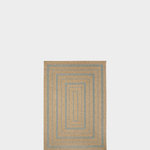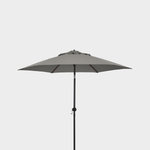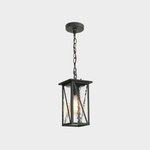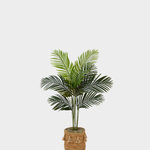Yard of the Week: Lush Plantings Surround Cozy Seating Areas
A designer transforms a long, narrow yard into an outdoor oasis with layers of soft plants and inviting nooks
Having a meal at a leafy rooftop restaurant in East London one day, the owners of this 1980s house fell for the relaxed mood of the casual seating areas and decked walkways amid grasses and climbers, and decided they’d love that look in their garden. So they contacted designer Natasha Nuttall to help them turn their neglected patch into a serene space where they could enjoy being outdoors and entertain with ease.
Undeterred by the tight dimensions of the plot, Nuttall cleverly fitted in a lounge area, a dining table, a casual seating spot and an outdoor kitchen, all softened and partially hidden by lush plantings.
Undeterred by the tight dimensions of the plot, Nuttall cleverly fitted in a lounge area, a dining table, a casual seating spot and an outdoor kitchen, all softened and partially hidden by lush plantings.
Before: The plot they inherited wasn’t doing the job. “It was basically a lawn that was failing and a rickety old patio, and the fence was falling down,” Nuttall says.
You can see from this photo how narrow the space is. Nuttall had to plan carefully to fit in all the elements the owners requested.
New to home remodeling? Learn the basics
You can see from this photo how narrow the space is. Nuttall had to plan carefully to fit in all the elements the owners requested.
New to home remodeling? Learn the basics
After: Nuttall’s trick to slotting so much into the yard was to soften the paving and boundaries with plants. “They’re not huge beds, but I tried to fit in as much as possible and plant quite densely,” she says. “I made sure the planting spilled over the edges to soften the hard landscaped areas.”
She explains that dense plantings also help to expand a space, because they create a bit of mystery; as you walk through the landscape, different areas are revealed.
At the corner of this bed by the rear patio is dwarf Japanese mock orange (Pittosporum tobira ‘Nanum’, USDA zones 9 to 10; find your zone), which, Nuttall says, “adds shape but isn’t too formal or fast-growing.” There are also ‘Starlight’ Chinese silver grass (Miscanthus sinensis ‘Starlight’, zones 5 to 9) and evergreen golden sweet flag (Acorus gramineus ‘Ogon’, zones 5 to 9), adding height, softness and movement to the beds.
Note: Some species of Miscanthus can self-seed and be considered invasive, depending on the locale and the site’s conditions. Check with your local nursery before planting.
She explains that dense plantings also help to expand a space, because they create a bit of mystery; as you walk through the landscape, different areas are revealed.
At the corner of this bed by the rear patio is dwarf Japanese mock orange (Pittosporum tobira ‘Nanum’, USDA zones 9 to 10; find your zone), which, Nuttall says, “adds shape but isn’t too formal or fast-growing.” There are also ‘Starlight’ Chinese silver grass (Miscanthus sinensis ‘Starlight’, zones 5 to 9) and evergreen golden sweet flag (Acorus gramineus ‘Ogon’, zones 5 to 9), adding height, softness and movement to the beds.
Note: Some species of Miscanthus can self-seed and be considered invasive, depending on the locale and the site’s conditions. Check with your local nursery before planting.
The seating area at the back of the yard can accommodate a crowd. A pergola provides shade for summer days, while a fire pit (just visible on the far left) keeps the area usable in cooler seasons.
There’s summer storage under a lift-up lid within the right-hand section of the bench; in the winter, the cushions are stored indoors. “The ‘floating’ section [of the bench] is underplanted, and there’s a light under there, which looks really nice in the evening,” Nuttall says.
The owners didn’t need a shed. “They’re not big gardeners, so the storage in the outdoor kitchen and the garage at the front of the house is enough,” Nuttall says.
Fragrant climbing plants growing up the pergola gently scent the area. At the back, evergreen pleached oleaster (Elaeagnus x ebbingei ‘Compacta’, zones 7 to 9) trees, which have leaves with pretty silvery undersides, create privacy while leaving the lovely texture of the original brick wall on display.
How to Renovate a Small Backyard
There’s summer storage under a lift-up lid within the right-hand section of the bench; in the winter, the cushions are stored indoors. “The ‘floating’ section [of the bench] is underplanted, and there’s a light under there, which looks really nice in the evening,” Nuttall says.
The owners didn’t need a shed. “They’re not big gardeners, so the storage in the outdoor kitchen and the garage at the front of the house is enough,” Nuttall says.
Fragrant climbing plants growing up the pergola gently scent the area. At the back, evergreen pleached oleaster (Elaeagnus x ebbingei ‘Compacta’, zones 7 to 9) trees, which have leaves with pretty silvery undersides, create privacy while leaving the lovely texture of the original brick wall on display.
How to Renovate a Small Backyard
Pale green baby’s tears (Soleirolia soleirolii, zones 9 to 11) adds a velvety note to the hardscape.
Before: The landscape was lower than the house, so Nuttall had to raise it to create an easy transition between indoors and out. “The owners didn’t want any steps,” she says.
This also helped with another problem. “The roots of the big cherry tree next door were coming up through the lawn, so we put root barrier around all the hard landscaped areas,” she says. She then raised the yard above them to align with the back of the house.
The grading work meant extra material had to be brought into the yard. “There’s a void under the deck near the house, though, so there wasn’t too much area that needed to be built up,” the designer says. “And luckily, there’s a side entrance!”
This also helped with another problem. “The roots of the big cherry tree next door were coming up through the lawn, so we put root barrier around all the hard landscaped areas,” she says. She then raised the yard above them to align with the back of the house.
The grading work meant extra material had to be brought into the yard. “There’s a void under the deck near the house, though, so there wasn’t too much area that needed to be built up,” the designer says. “And luckily, there’s a side entrance!”
After: The boundary in front of the cherry tree now has a kitchen running along it. The new fence is painted dark gray. “The owners like dark colors — the back doors are black, so we used those as inspiration,” Nuttall says.
She chose gray decking boards and tiles. The owners wanted low-maintenance materials, so she used porcelain and composite decking.
The cooker is a Kamado Joe grill. “The husband was really keen on having one, and they use it a lot, even in winter,” Nuttall says. To fit in the large appliance, she designed the kitchen cabinets to be deeper than usual.
Charcoal DesignBoard composite decking; Slab Coke porcelain paving, both by London Stone
What to Know About Adding an Outdoor Kitchen
She chose gray decking boards and tiles. The owners wanted low-maintenance materials, so she used porcelain and composite decking.
The cooker is a Kamado Joe grill. “The husband was really keen on having one, and they use it a lot, even in winter,” Nuttall says. To fit in the large appliance, she designed the kitchen cabinets to be deeper than usual.
Charcoal DesignBoard composite decking; Slab Coke porcelain paving, both by London Stone
What to Know About Adding an Outdoor Kitchen
The landscape now feels very much part of the house, as this view from the back room shows. The dining table can be extended, which is perfect for the family members — who like to entertain and, since the pandemic, sometimes work in the yard.
Three tree ferns (there’s a third one at the far end of the kitchen) make nice architectural features in the landscape and lead the eye through the space. “Tree ferns usually stay green throughout winter in London, though this year they’ve suffered with the prolonged cold patches, and some leaves have gone brown,” Nuttall says. “But it doesn’t matter, as in spring the new leaves will unfold and the old ones can be cut off.”
Shop for outdoor furniture on Houzz
Three tree ferns (there’s a third one at the far end of the kitchen) make nice architectural features in the landscape and lead the eye through the space. “Tree ferns usually stay green throughout winter in London, though this year they’ve suffered with the prolonged cold patches, and some leaves have gone brown,” Nuttall says. “But it doesn’t matter, as in spring the new leaves will unfold and the old ones can be cut off.”
Shop for outdoor furniture on Houzz
Nuttall included lots of evergreen plants. “Even though the design makes it look bigger, the actual space isn’t huge, so I wanted to fill it with things that had a presence most of the year,” she says. “Some things go below ground, and there are lots of bulbs, but there are also a lot of things that are leafy year-round.”
The purple-leaved plant seen here is ‘Royal Purple’ smoke bush (Cotinus coggygria ‘Royal Purple’, zones 4 to 8), which can be cut back hard each year or two in order to maintain the desired size and shape.
Other plants include saxifrage (Saxifraga x geum ‘Dentata’, zones 6 to 9), ‘Blackthorn’ burnet (Sanguisorba ‘Blackthorn’, zones 4 to 9), masterwort (Astrantia sp.), hydrangea and sage (Salvia x jamensis, zones 7 to 9). The little tree in the middle distance is Japanese snowbell tree (Styrax japonicus ‘Snowcone’, zones 5 to 9).
The purple-leaved plant seen here is ‘Royal Purple’ smoke bush (Cotinus coggygria ‘Royal Purple’, zones 4 to 8), which can be cut back hard each year or two in order to maintain the desired size and shape.
Other plants include saxifrage (Saxifraga x geum ‘Dentata’, zones 6 to 9), ‘Blackthorn’ burnet (Sanguisorba ‘Blackthorn’, zones 4 to 9), masterwort (Astrantia sp.), hydrangea and sage (Salvia x jamensis, zones 7 to 9). The little tree in the middle distance is Japanese snowbell tree (Styrax japonicus ‘Snowcone’, zones 5 to 9).
Nuttall had to take into account the fact that a landscape like this has lots of shady spots. “The sun does move around, but I’ve gone for a lot of shade-tolerant plants, as some areas don’t get very much light,” she says.
She took advantage of the borrowed landscape in the form of trees in a neighboring yard by planting climbers by the fences. The star jasmine (Trachelospermum jasminoides, zones 8 to 10) seen here, for instance, already visually connects with the tree behind and blurs the boundary.
A range of colors from greens to reddish purple flows beautifully down the garden. “It’s kind of like a tapestry,” Nuttall says. “Although I love flowering plants and try to get them in, really what you’re going to be seeing most of the time is the different textures and colors of foliage, and that gives a lovely layered tapestry of planting that makes it look really lush, even in the winter.”
She took advantage of the borrowed landscape in the form of trees in a neighboring yard by planting climbers by the fences. The star jasmine (Trachelospermum jasminoides, zones 8 to 10) seen here, for instance, already visually connects with the tree behind and blurs the boundary.
A range of colors from greens to reddish purple flows beautifully down the garden. “It’s kind of like a tapestry,” Nuttall says. “Although I love flowering plants and try to get them in, really what you’re going to be seeing most of the time is the different textures and colors of foliage, and that gives a lovely layered tapestry of planting that makes it look really lush, even in the winter.”
The landscape has a watering system that delivers water to the roots. “We set it to come on either late at night or very early morning, so the water doesn’t just evaporate,” Nuttall says.
The lighting is wired in. “It’s just for atmosphere really — it doesn’t light up the whole garden,” she says.
Unsurprisingly, the owners love their new leafy, sociable yard, calling it “an all-year-round delight.”
More on Houzz
Read more landscape design stories
Get landscape design ideas
Find a landscape designer or architect
Shop for outdoor products
The lighting is wired in. “It’s just for atmosphere really — it doesn’t light up the whole garden,” she says.
Unsurprisingly, the owners love their new leafy, sociable yard, calling it “an all-year-round delight.”
More on Houzz
Read more landscape design stories
Get landscape design ideas
Find a landscape designer or architect
Shop for outdoor products














Yard at a Glance
Who lives here: A couple with two teenage daughters
Location: East London
Size: 701 square feet (65 square meters); 16½ by 42½ feet (5 by 13 meters)
Landscape designer: Natasha Nuttall Garden Design
The owners aren’t avid gardeners, but they wanted an easy-to-maintain leafy retreat where they could hang out almost year-round with their daughters and entertain friends.
Find a local landscape designer